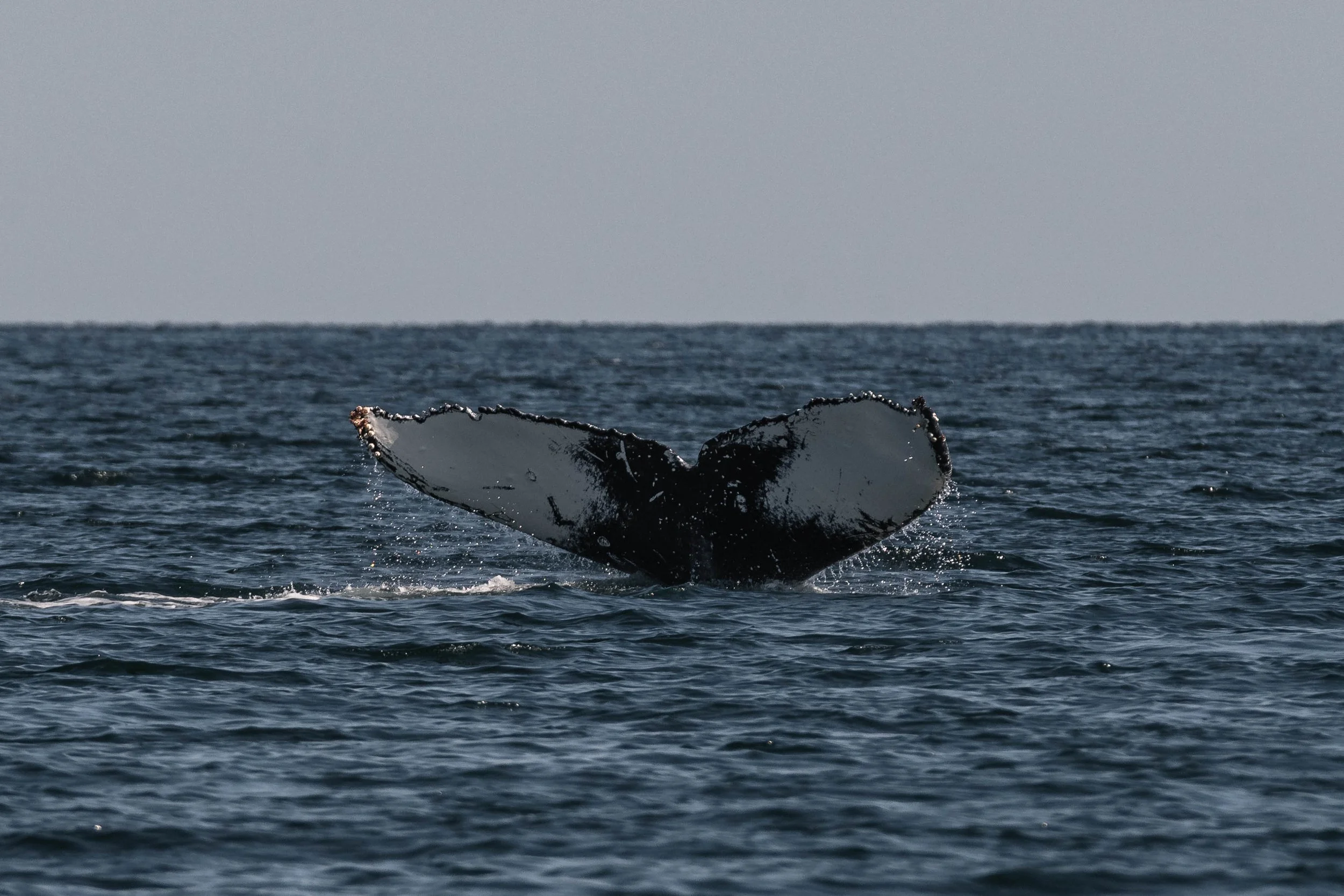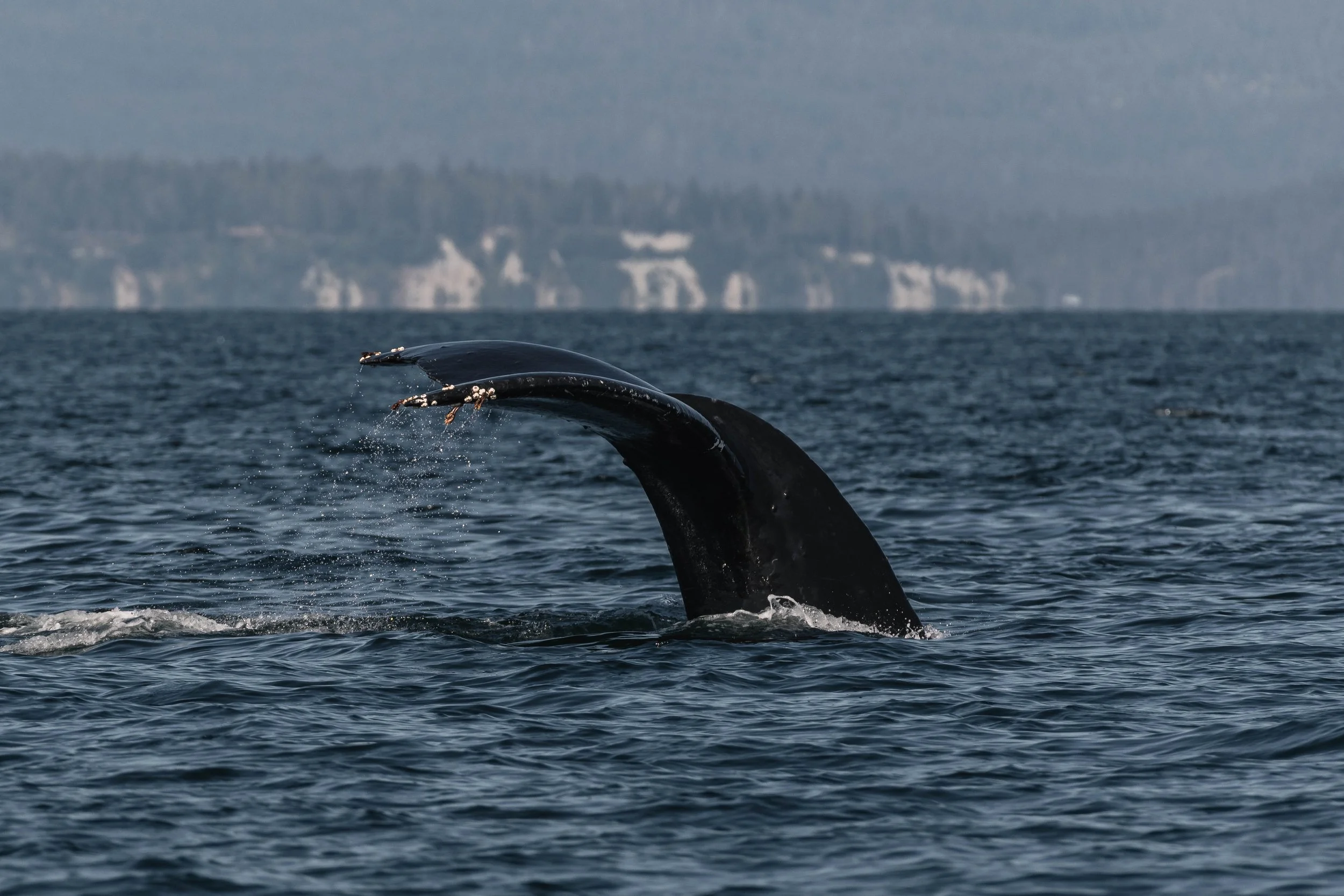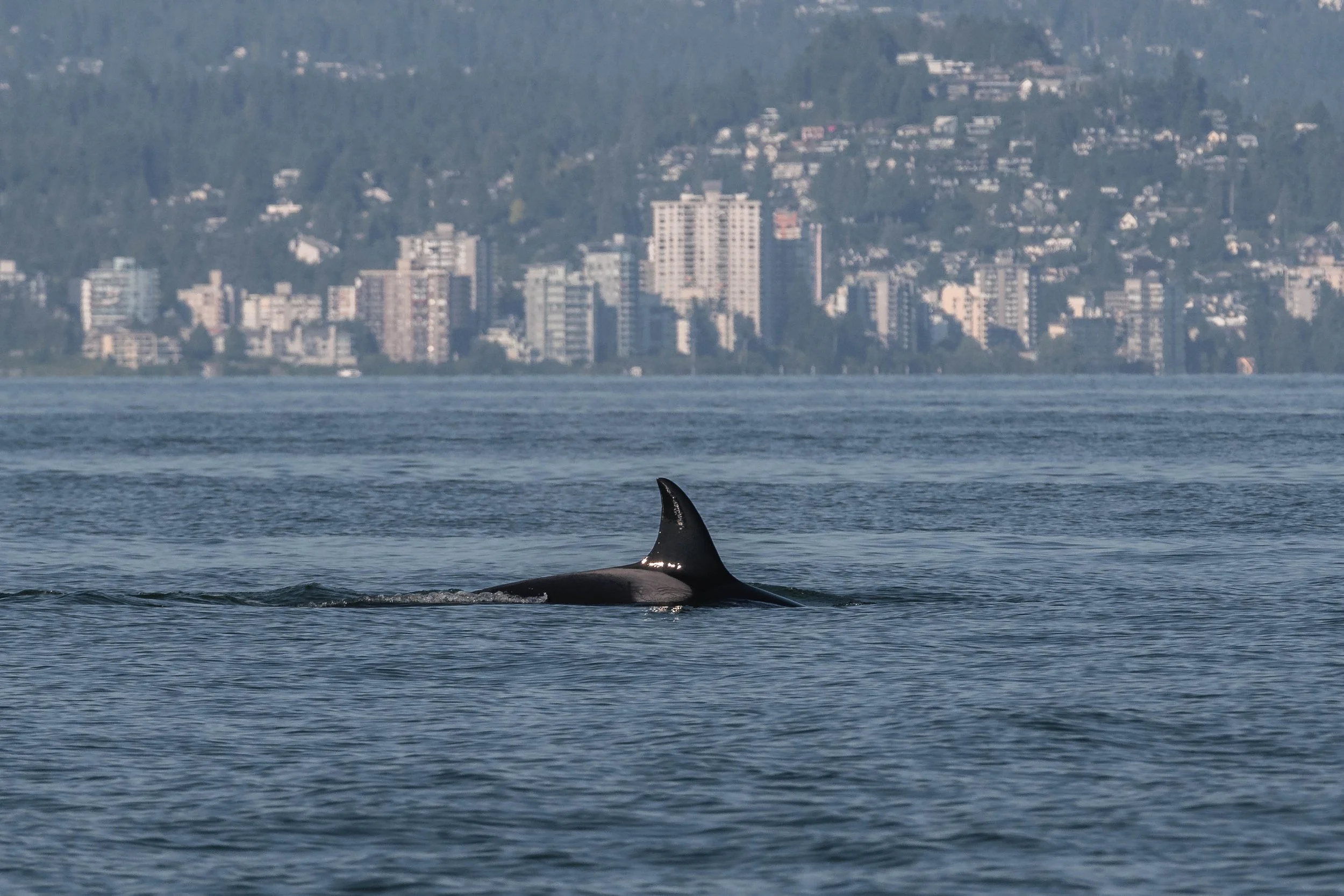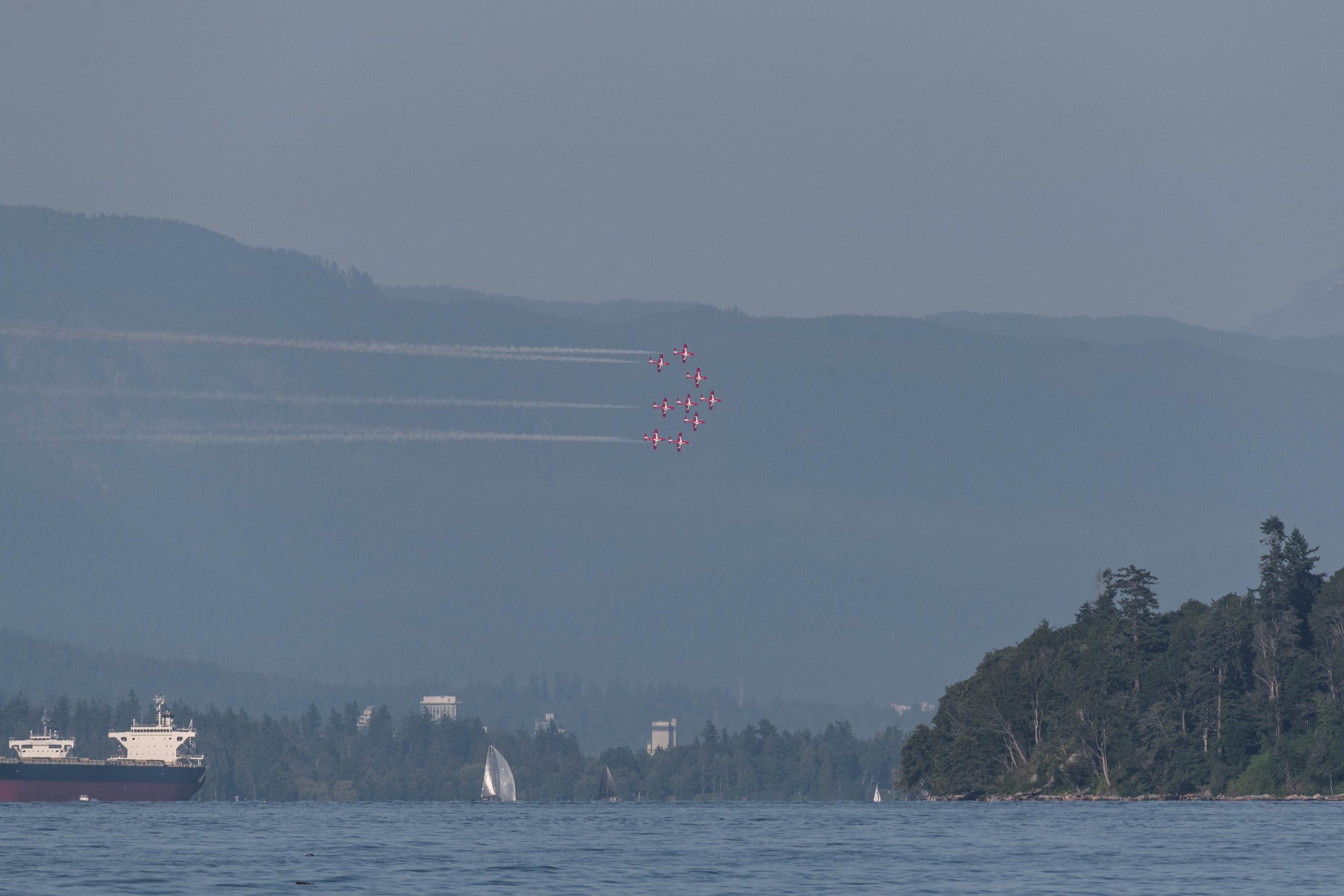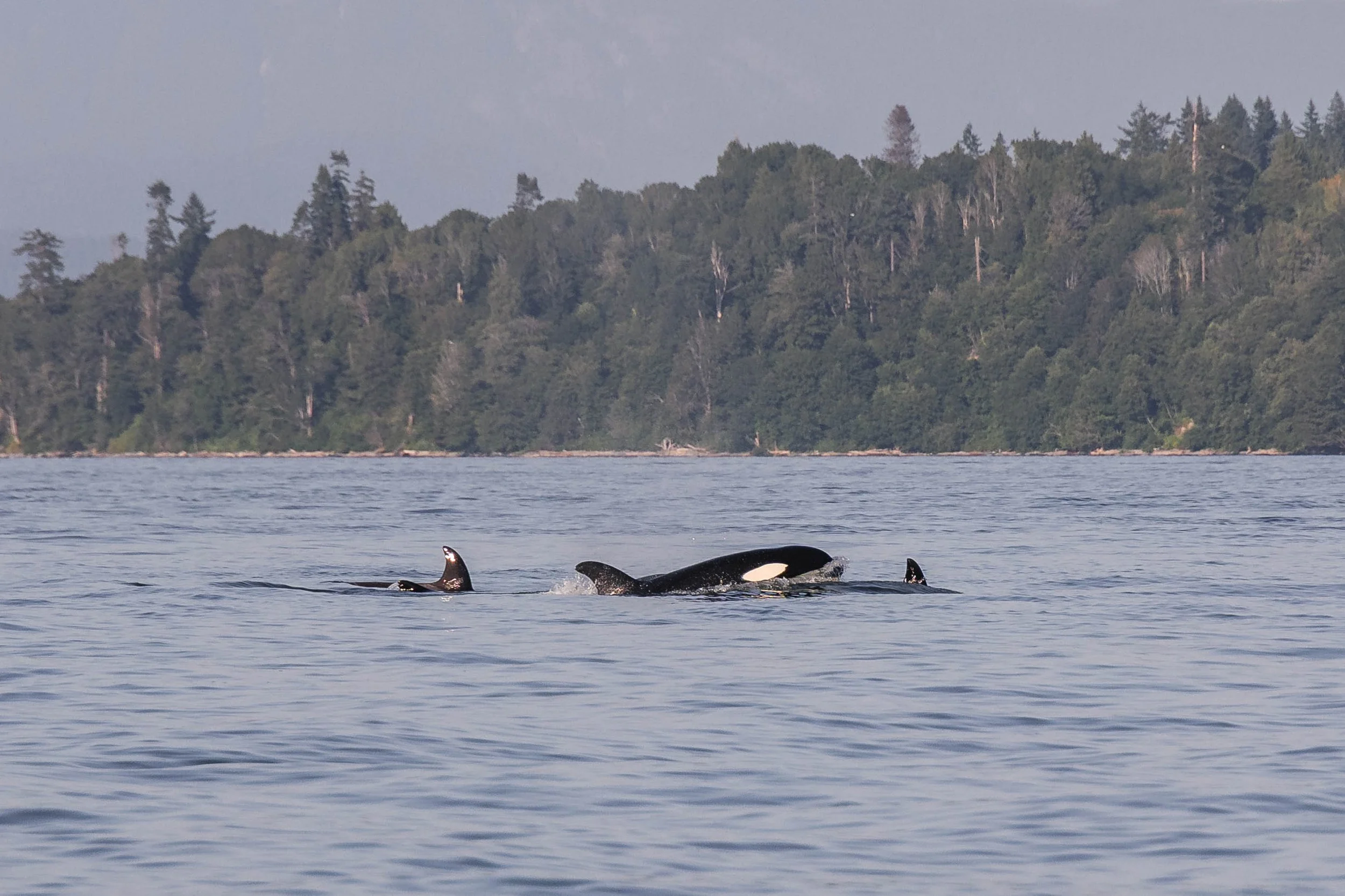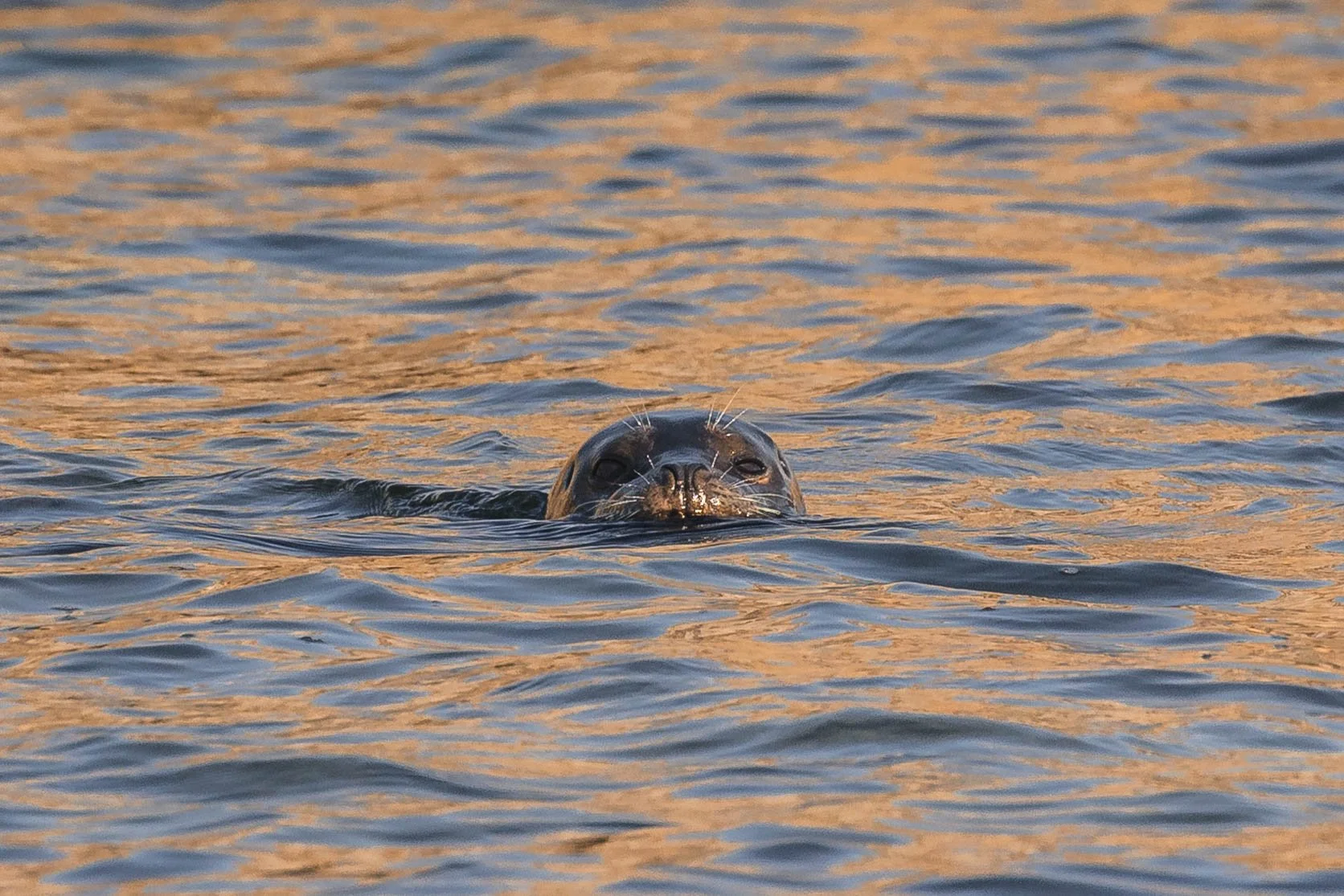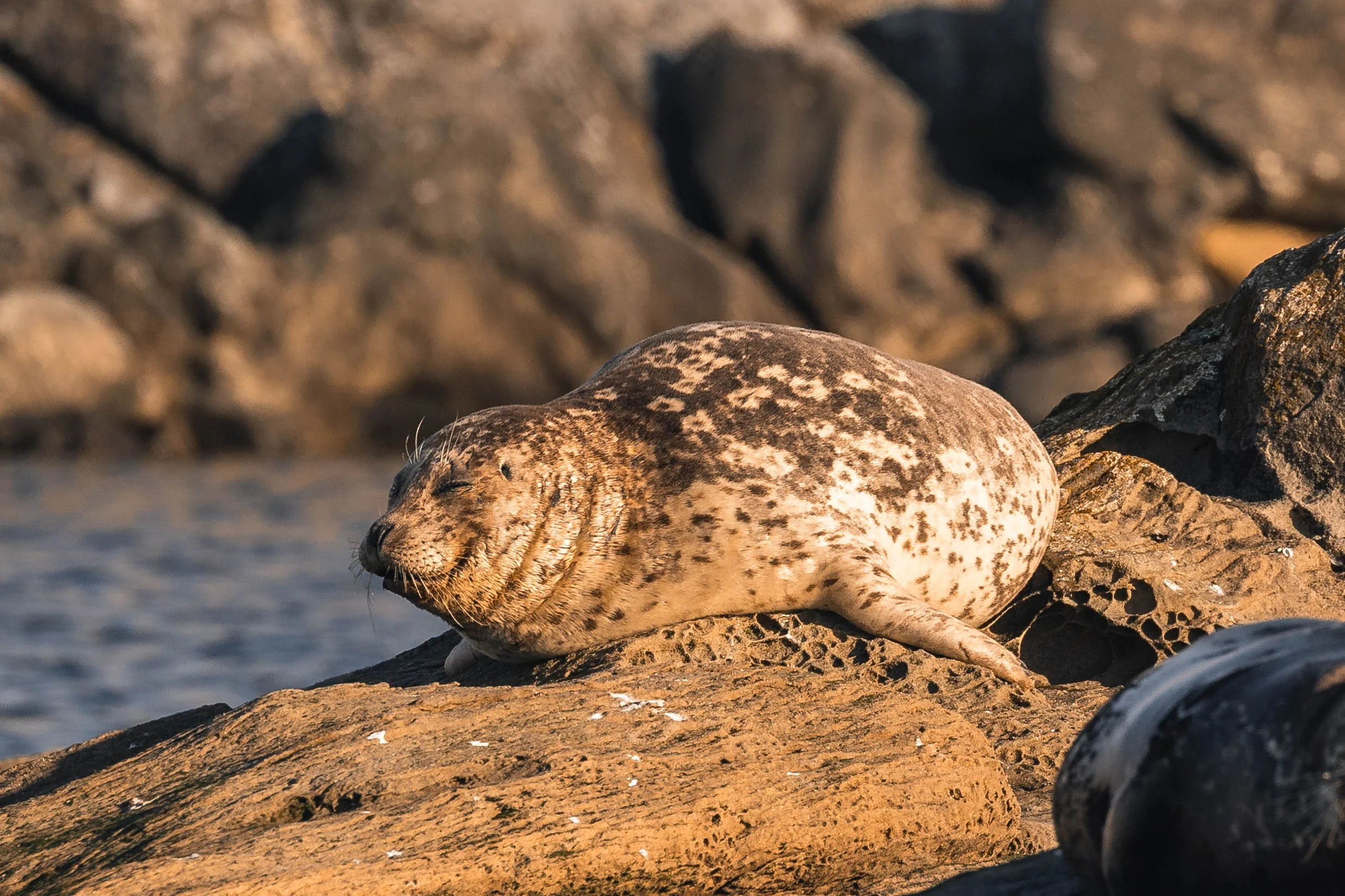July 23, 2025, 3:30 PM - Double species in the Strait.
We had the whole fleet off the dock again this afternoon with a plan to search north, so off we went. We were close to Lasqueti Island when we spotted some splashing in the distance. Of course, we went to check it out!
It looked like we had “humpback soup”, which is what we call it when we have multiple whales in an area. It was a good problem to have, as we were not sure where to look! These humpbacks were pretty spread out, making getting individual identifications a tad more difficult. However, we were able to get a few pictures of those big, beautiful tails, like a fingerprint, all unique to each whale. We had Niagara (BCY0057) and Mogul (BCY1108) with our semi-covered vessel, Kula. Our open vessel, Keta, had a pec slapping and breaching humpback just off the East side of Lasqueti Island. By the time we had arrived, our humpback had appeared to have tuckered itself out, and this whale remained unidentified as we were not able to get a photo of their tail.
Our third vessel, Cascadia, had also spotted a blow near Halibut Bank when they stopped to see the Steller Sea Lions on the ODAS buoy. Stellers are known for their adaptability, and one of the more unusual places they choose to haul out is on navigational buoys. These bright red, yellow or green metal structures, designed to guide vessels safely through coastal waters, often become makeshift resting spots for these massive marine mammals. Especially in areas where natural rocky outcroppings are limited or already crowded, buoys offer a convenient place for sea lions to haul their bulky bodies out of the water to rest, warm up, and socialize. It's not uncommon to see a group of sea lions piled high, jostling for space on a single buoy, barking loudly and sometimes even pushing each other off. While comical to witness, it's also a great reminder of how wildlife can adapt to human-made features in their environment. While being entertained by our vocal sea lions, this humpback gave us a beautiful fluke, and we quickly identified them as Malachite (BCY1463) before continuing. We were off to a vague report near Vancouver, so we didn't stay long!
It was Cascadia who spotted the fins first, accompanied by the Vancouver highrises on the horizon. It was the T036As, consisting of:
T036A Leland ♀ (1990)
T036A1 Tierna ♀ (2005)
T036A1A Drift ♂ (2022)
T036A2 Kailas ♀ (2012)
T036A3 Storm/Mike III ♂ (2015)
T036A5 Squall ♂ (2021)
It's always a thrill to spot orca in the wild, but when they appear in unexpected places, like the busy waters of Vancouver Harbour, it tends to make headlines. Recently, sightings of Transient (Bigg's) killer whales cruising through the heart of Vancouver have become more common. But what draws these apex predators into such high-traffic, noisy environments?
The short answer: food.
Transient orcas are marine mammal hunters, and Vancouver's urban shoreline is home to a surprising abundance of prey. Harbour seals, sea lions, and even harbour porpoises are frequent residents of the city's surrounding waters. Docks, marinas, breakwaters, and even barge pilings offer resting spots and haul-outs for these prey animals, and the orcas have learned to follow the food, even if that means entering waters bustling with ferries, freighters, and water taxis.
These urban visits are usually brief. The orca move stealthily, often slipping between anchored ships or under bridges with surprising ease. Their intelligence and adaptability allow them to navigate complex environments, using echolocation to understand their surroundings while remaining undetected by prey. For us, it's a powerful reminder of just how versatile these whales are and how much of their world overlaps with ours.
While it's exciting to witness orca in such iconic locations, it also highlights the need for thoughtful stewardship of our marine spaces. High vessel traffic areas can pose risks to whales through underwater noise pollution, disturbance, and even vessel strikes. Groups like local Marine Mammal Response networks are working to balance the needs of commerce with the health of the ecosystem, encouraging slower vessel speeds and increased awareness when whales are present.
These harbour visits are a testament to the resilience of Transient orca, and the growing health of their prey base in the Salish Sea. As top predators, their presence is a positive sign for the region's recovering marine life. So next time you hear about orca near the harbour, know that they're not lost, they're right where the food is. After spending time watching our iconic orca it was time to head back home!
Enjoy the photos below taken by Aly Kohlman, Hayleigh Hilbert and Vanessa Vereschahen.
Malachite’s dorsal. Photo by Hayleigh Hilbert.
Mogul fluking. Photo by Aly Kohlman.
Mogul with Niagara following. Photo by Aly Kohlman.
Niagara pooping! Photo by Aly Kohlman.
Niagara diving. Photo by Aly Kohlman.
Steller Sea Lions on the ODAS buoy. Photo by Aly Kohlman.
Steller Sea Lions sleeping. Photo by Hayleigh Hilbert.
T036A Leland. Photo by Aly Kohlman.
T036A Leland leading the way! Photo by Aly Kohlman.
T036A2 Kailas following big sister T036A1 Tierna. Photo by Aly Kohlman.
Snowbirds flying in formation. Photo by Aly Kohlman.
T036A1 Tierna is T036A Leland's olderst daughter and sometimes travels away from her mother. Photo by Aly Kohlman.
Did you know we can ID whales based on their eyepatch? This is T036A1A Drift! Photo by Aly Kohlman.
We can ID our orca by their dorsal fins, this is T036A1 Tierna! Photo by Hayleigh Hilbert.
Echelon position helps us know whos calf belons to who. Here you can see T036A1A Drift coming up in echolon position with T036A1 Tierna. Photo by Hayleigh Hilbert.
Family photo! Photo by Hayleigh Hilbert.
T036A3 Storm/Mike III surfacing in front of Vancouver. Photo by Hayleigh Hilbert.
The T036A family cruising past Vancouver. Photo by Hayleigh Hilbert.
Coming out high for a breath! Photo by Vanessa Vereschahen.
Can you see the noth on the top of the left dorsal fin? That’s how to ID T036A2 Kailas. Photo by Vanessa Vereschahen.
A Harbour Seal checking us out from the water. Photo by Hayleigh Hilbert.
A chunky Harbour Seal basking in the afternoon sun. Photo by Hayleigh Hilbert.
A Black Oystercatcher. Photo by Hayleigh Hilbert.
Black Turnstones hanging out with a Surfbird at Snake Island. Photo by Hayleigh Hilbert.


